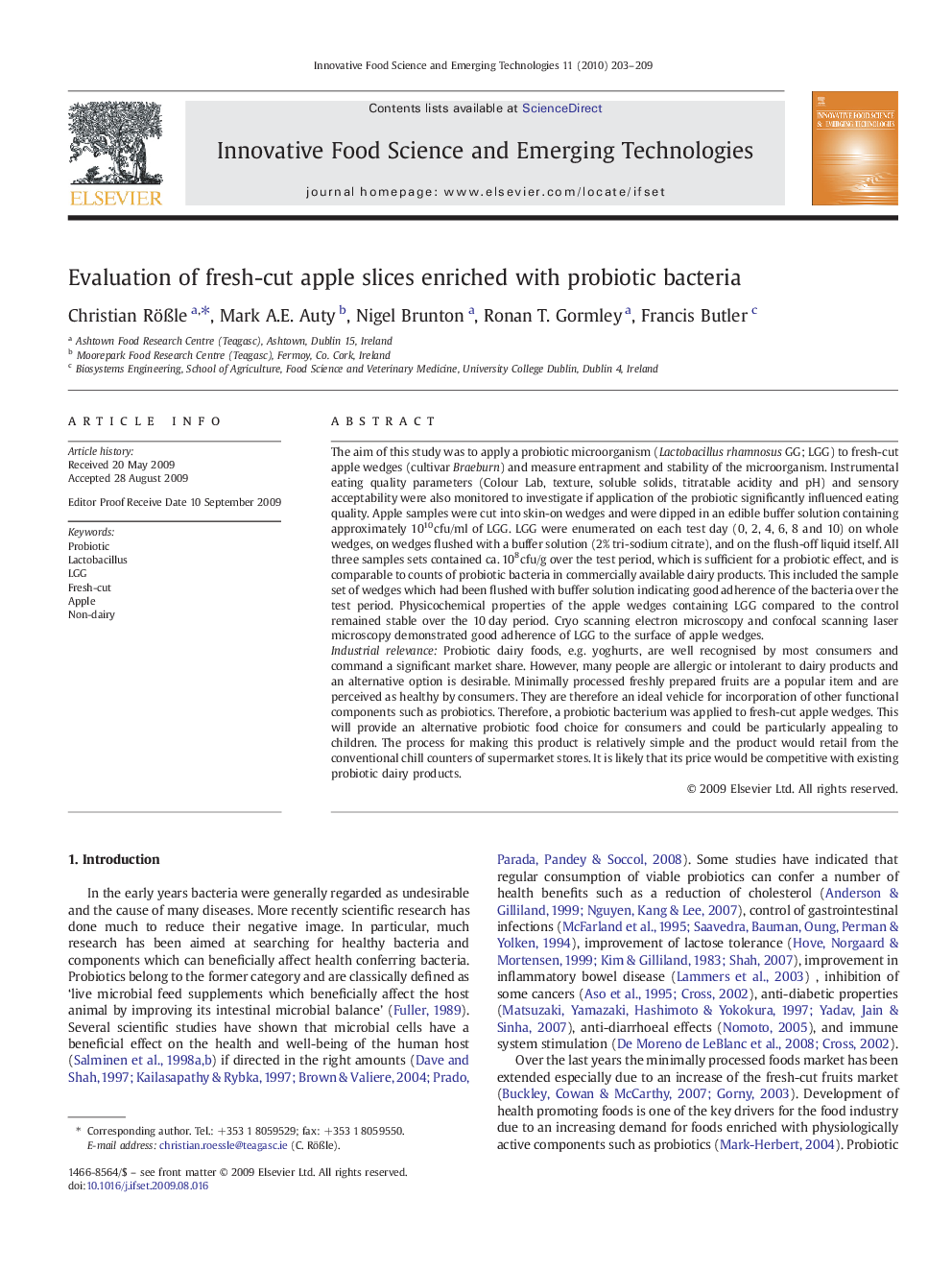| Article ID | Journal | Published Year | Pages | File Type |
|---|---|---|---|---|
| 2086982 | Innovative Food Science & Emerging Technologies | 2010 | 7 Pages |
The aim of this study was to apply a probiotic microorganism (Lactobacillus rhamnosus GG; LGG) to fresh-cut apple wedges (cultivar Braeburn) and measure entrapment and stability of the microorganism. Instrumental eating quality parameters (Colour Lab, texture, soluble solids, titratable acidity and pH) and sensory acceptability were also monitored to investigate if application of the probiotic significantly influenced eating quality. Apple samples were cut into skin-on wedges and were dipped in an edible buffer solution containing approximately 1010 cfu/ml of LGG. LGG were enumerated on each test day (0, 2, 4, 6, 8 and 10) on whole wedges, on wedges flushed with a buffer solution (2% tri-sodium citrate), and on the flush-off liquid itself. All three samples sets contained ca. 108 cfu/g over the test period, which is sufficient for a probiotic effect, and is comparable to counts of probiotic bacteria in commercially available dairy products. This included the sample set of wedges which had been flushed with buffer solution indicating good adherence of the bacteria over the test period. Physicochemical properties of the apple wedges containing LGG compared to the control remained stable over the 10 day period. Cryo scanning electron microscopy and confocal scanning laser microscopy demonstrated good adherence of LGG to the surface of apple wedges.Industrial relevanceProbiotic dairy foods, e.g. yoghurts, are well recognised by most consumers and command a significant market share. However, many people are allergic or intolerant to dairy products and an alternative option is desirable. Minimally processed freshly prepared fruits are a popular item and are perceived as healthy by consumers. They are therefore an ideal vehicle for incorporation of other functional components such as probiotics. Therefore, a probiotic bacterium was applied to fresh-cut apple wedges. This will provide an alternative probiotic food choice for consumers and could be particularly appealing to children. The process for making this product is relatively simple and the product would retail from the conventional chill counters of supermarket stores. It is likely that its price would be competitive with existing probiotic dairy products.
